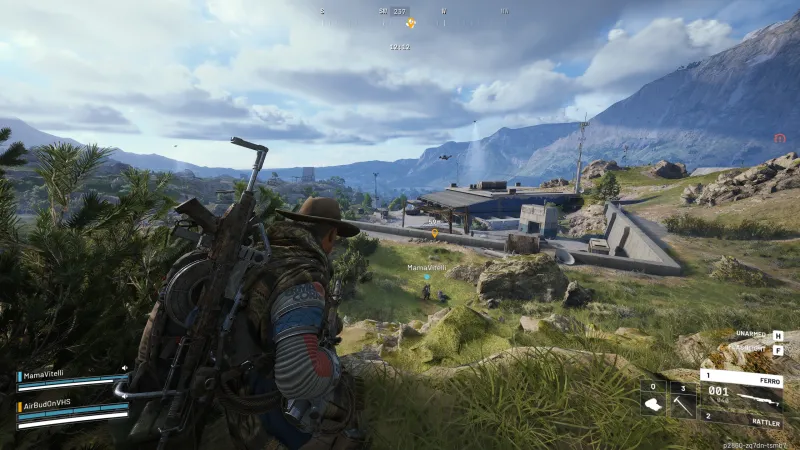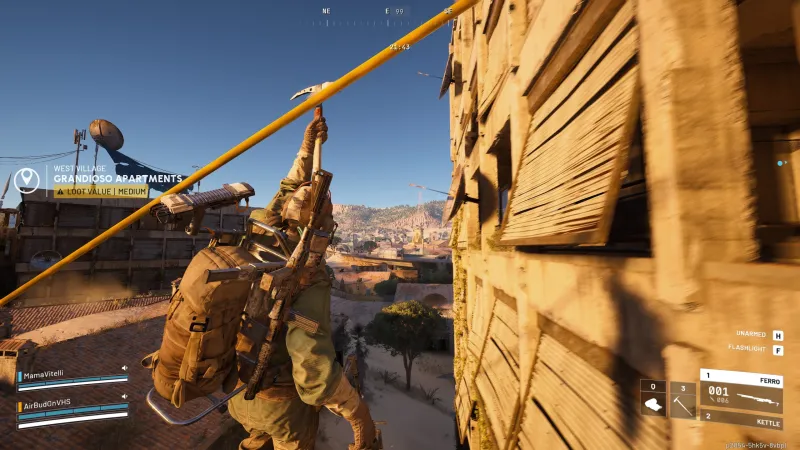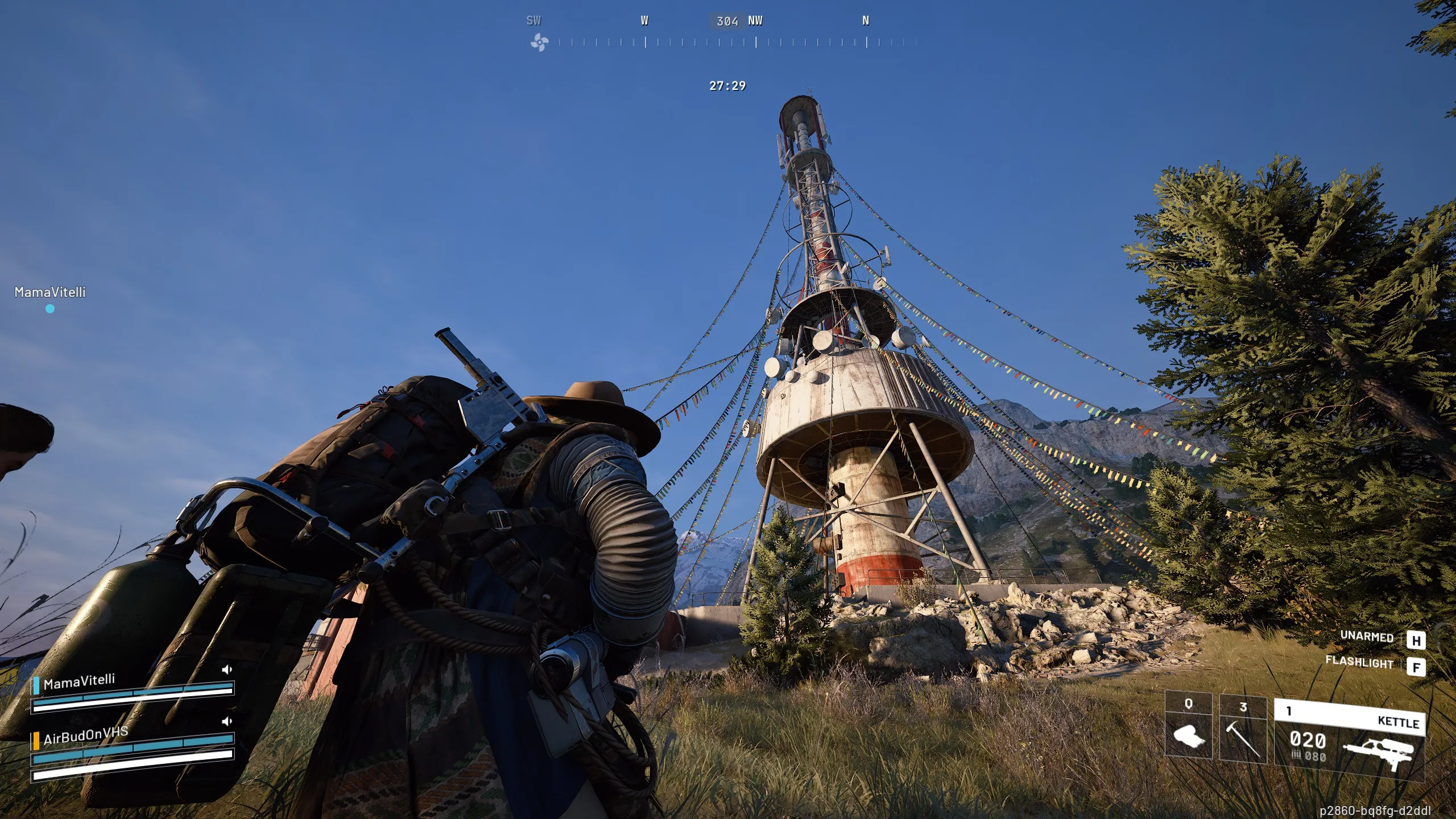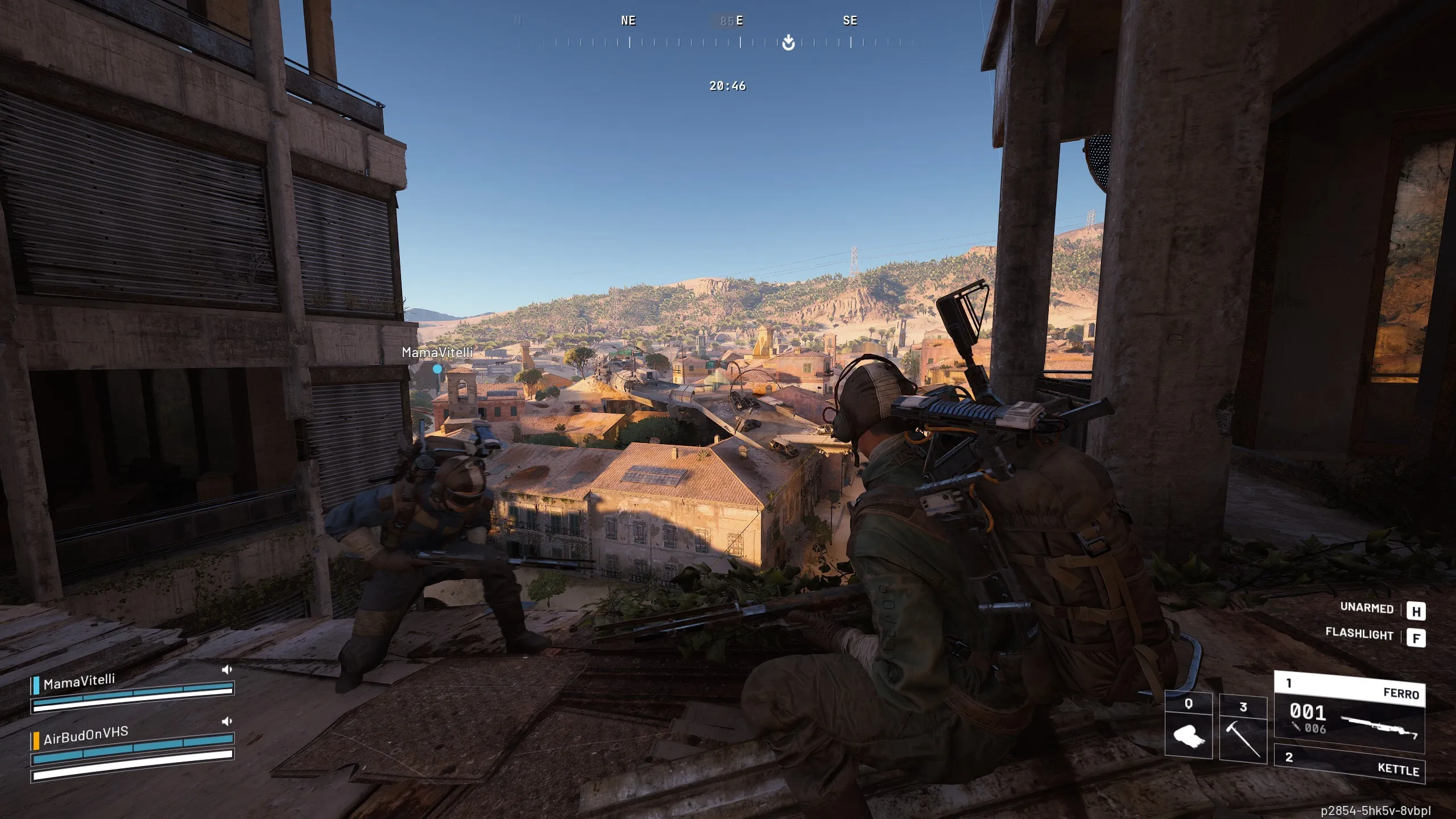
Our extra-large special edition is here. Subscribe today and receive the 25% longer issue at no extra cost!

Arc Raiders Review
Arc Raiders is my favorite extraction shooter to date, surpassing its competition with incredible level design, a deep yet easy-to-navigate crafting system, stunning art direction, and an exciting suite of weaponry and gadgets to discover. Developer Embark Studios’ sophomore release also cultivates a surprisingly helpful community in a subgenre known for obfuscation and treachery. However, player-versus-player firefights still shine thanks to exceptional sound design: shields break like fireworks, characters yelp whenever a projectile hits them, and players can taunt or negotiate with others on the fly via proximity chat. Unpredictable player interactions and some of the most intelligent enemies I’ve seen in a shooter work in tandem to create a thrilling experience that rivals the market’s best multiplayer offerings.
A devastating force of robots known as Arc has infiltrated the planet, forcing humanity to flee underground. Speranza, a subterranean city aptly named after the Italian word for “hope,” serves as a headquarters where raiders (i.e., players) interact with various vendors (who also serve as quest givers), improve their character via an expansive skill tree, and upgrade their bases to unlock new equipment blueprints. After selecting a map, players spawn at a random location, usually emerging into the world from a protected interior, like a bunker or apartment building, or a secluded area on the edge of the world. The primary goal of any one run is different for every person; tasks range from eliminating specific Arc types (pun intended) to gathering tree fruit for training your pet chicken at home. Of course, sometimes you just want to find new loot or hunt other players.

Every match requires careful strategy. My risk tolerance and level pathing often change based on the loot I’ve acquired; death results in losing everything in your inventory, save for one or two items stowed in a character’s safe pouches. Elevators (or train stations, in some cases) act as public extraction zones, requiring squads to wait while loudspeakers and alarms signal their exit attempt. Friendly players may also try to exfiltrate alongside you, as departure points slowly deactivate as the match’s 30-minute timer runs out, but ambushes and backstabbings are always a consideration. Even well-intentioned alliances can fall apart due to miscommunication or interference from other parties, making every successful extraction a satisfying relief.
Before loading into a map, players arm themselves with old-world weaponry, such as schlocky marksman rifles and crudely-crafted shotguns, alongside a selection of experimental gadgetry, including photoelectric cloaks, portable barricades, laser weapons, and a variety of explosives and traversal items. Battles play out spectacularly, with Embark’s art and audio mastery on impressive display. Sparks fly as bullets penetrate shields, glimmering particles and glitch sounds signaling the devices’ electrical failure. Flairs automatically fly skyward whenever a raider is knocked out, flagging their vulnerability and whereabouts to friendlies and enemies alike.
Every weapon distinguishes itself with distinct characteristics, such as reload time, fire rate, range, and recoil pattern. Many items in Arc Raiders have multiple use cases, enabling players to creatively overcome a wide range of scenarios. I love outplaying a better-equipped squad with a thoughtful strategy, like using a Lure Grenade to provoke a nearby Rocketeer to attack their position, narrowly escaping via the contested exit with my hard-earned spoils.
Environments are beautifully rendered and full of depth and verticality, frequently rewarding players for exploring even the most discrete locations. The mountainous Dam Battlegrounds features concrete laboratories rife with hostile security systems that dispatch swarming rollerbots and turret-like sentinels. Spaceport depicts lore-rich scenes showcasing the Arc’s immense scale, with deactivated machine husks draped over the perimeter wall guarding a rocket launch site, the massive carcass dwarfing a monument to humanity’s accomplishments.
Points of interest not only serve as strategic strongholds, but they also often attract multiple teams searching for various categories of loot, creating natural friction that keeps encounters tense and unpredictable. Alternatively, common regions offer a slower pace for risk-adverse raiders, usually trading rarer discoveries for less opposition. Various weather systems and map modifiers, like Electromagnetic Storm or Night Raid, significantly alter the loot pool, enemy machine behavior, general visibility, and available extraction points.
Although the overall crafting experience is polished, inventory management is a notable pain point. Upgrading your stash size is easy enough (it requires money from sold valuables), but there’s no way to search for a specific item in your inventory, increasing the time spent outside of excursions while trying to locate certain crafting resources. Despite an automatic system that groups loot into common categories like quick-use consumables or weapons, the lack of bin customization options is generally frustrating.

The artificial intelligence powering the Arc's behavior is exceptional. Stealthing past patrols is exciting, as foliage and shadows affect the machines’ detection capabilities. The moments whenever a machine detects you are exhilarating, as they check corners and change elevation while tracing your scent like a hunting dog. Fighting Arc is risky, whether fighting grunt-like Wasps or evading larger menaces like Bastions and Leapers, as they can quickly dismantle even the most skillful team. Each threat demands serious consideration.
As it did with The Finals, Embark’s debut release, the studio’s continued reliance on AI-powered text-to-speech tools detracts from my enjoyment of its final product. This technology is used in collaboration with the game’s ping system to highlight objects in the environment with dialogue barks.
Setting aside my ethical concerns, I struggle to see how text-to-speech generation actually improves production, which is the company’s stated reason for using such technology. The democratization of audio recording processes over the last 20 years has made capturing performances, even remotely, easier and more affordable than ever before. Arc Raiders’ flat acting and dialogue barks stand out in a game with such beautiful human-generated art.
However, this use-case is nuanced. Players may elect to mask their authentic voices with one of the pre-recorded actors’ voice models, using Embark’s text-to-speech technology, allowing vulnerable populations to avoid harassment they may otherwise face in online video games. I’ve witnessed firsthand how misogynistic and toxic some multiplayer lobbies can be towards women and other minorities. If this setting helps those folks enjoy a title they might not have otherwise, I count it as a silver lining.
Despite my misgivings, I hold the human-made experience of Arc Raiders in high regard. Its creators have made an intriguing world full of curiosities and payoffs. Nearly every match yields a memorable sequence: an unexpected encounter, a dramatic escape, a hilarious interaction, or a tragic end. While casual gamers may find its harsh consequences frustrating, Arc Raiders provides an impressive setting and format for multiplayer fans seeking excellent engagements and novel interactions.





Get the Game Informer Print Edition!
Explore your favorite games in premium print format, delivered to your door.
- 10 issues per year
- Only $4.80 per issue
- Full digital magazine archive access
- Since 1991











